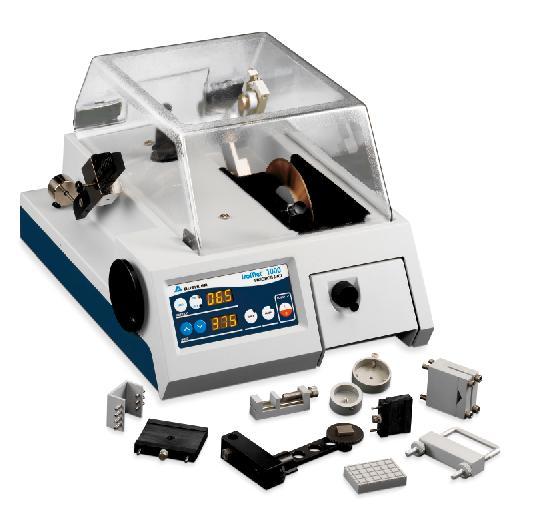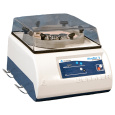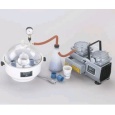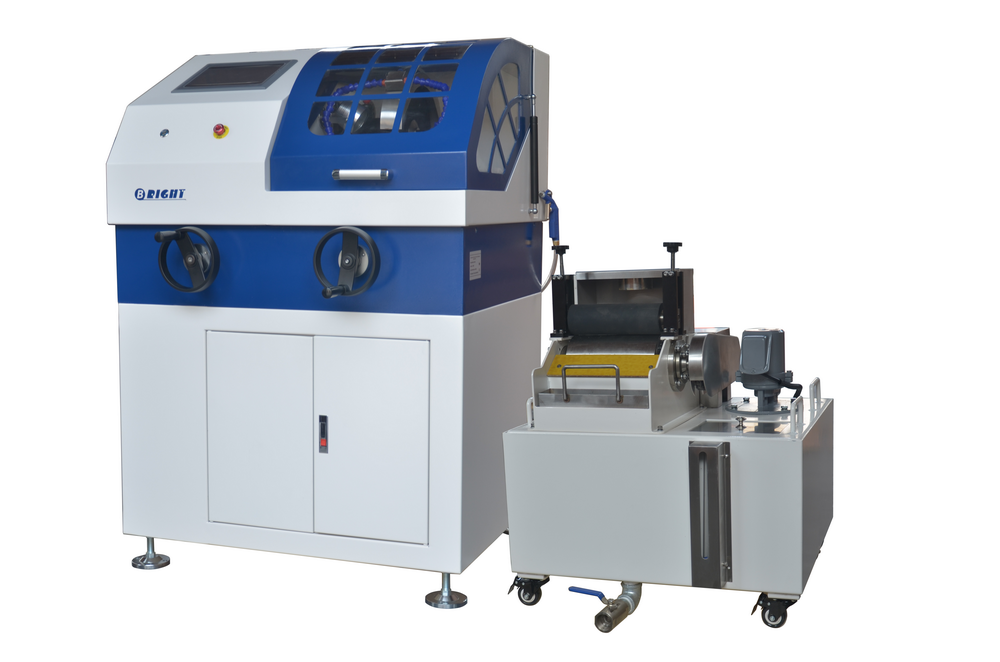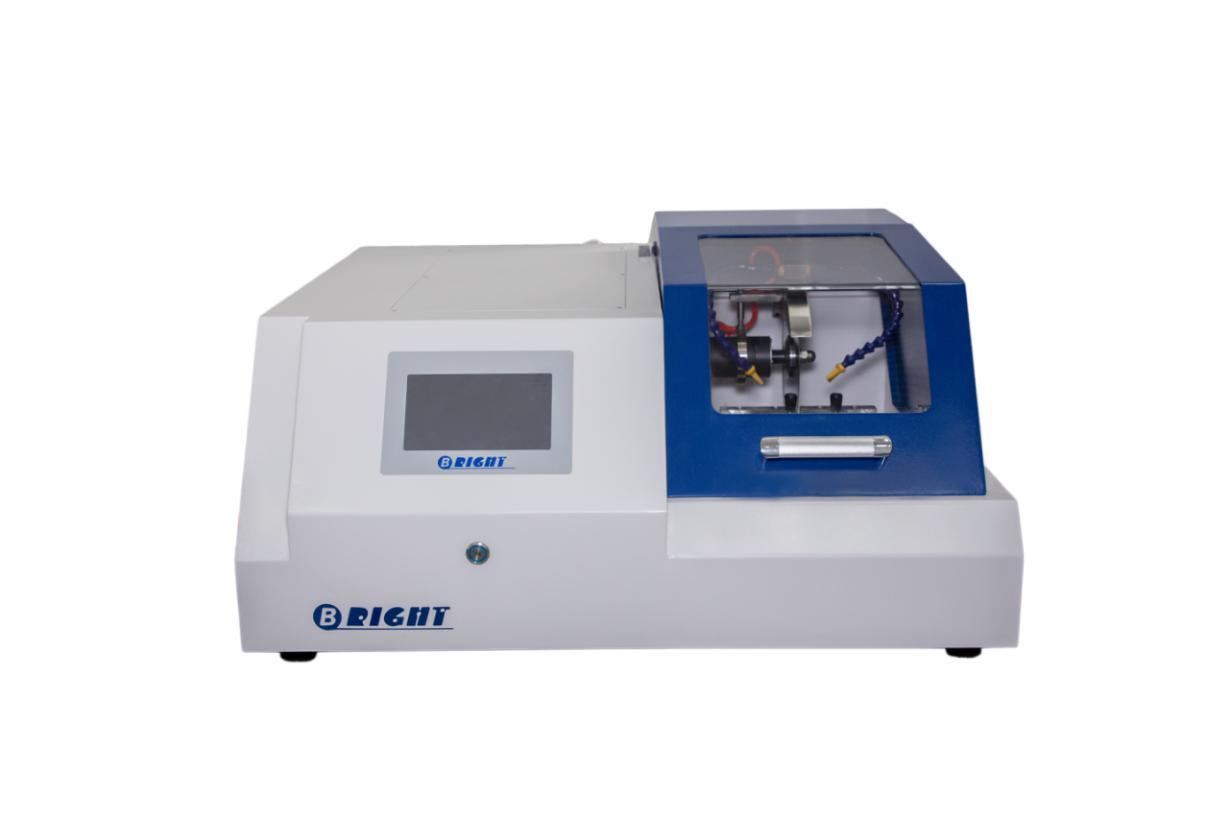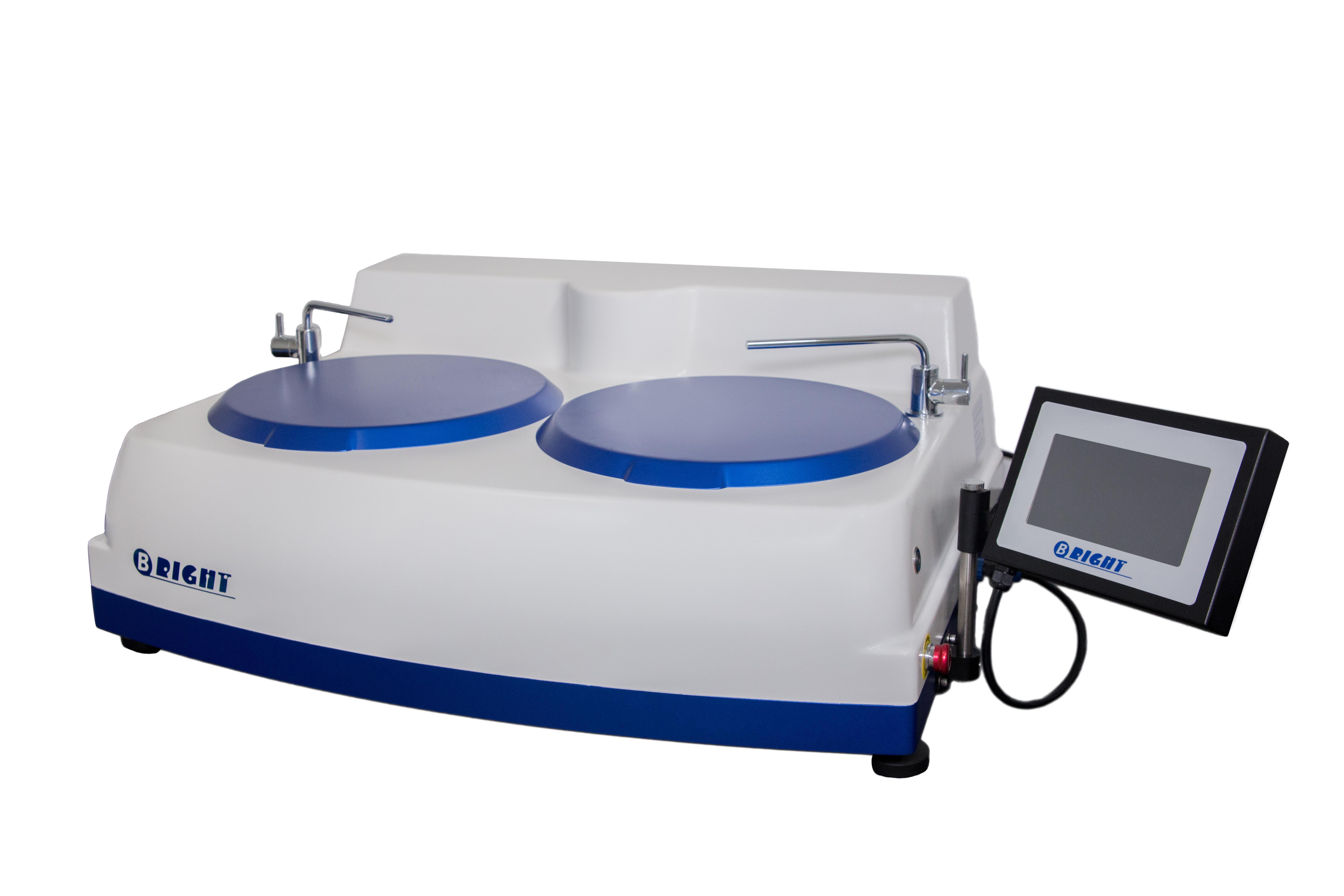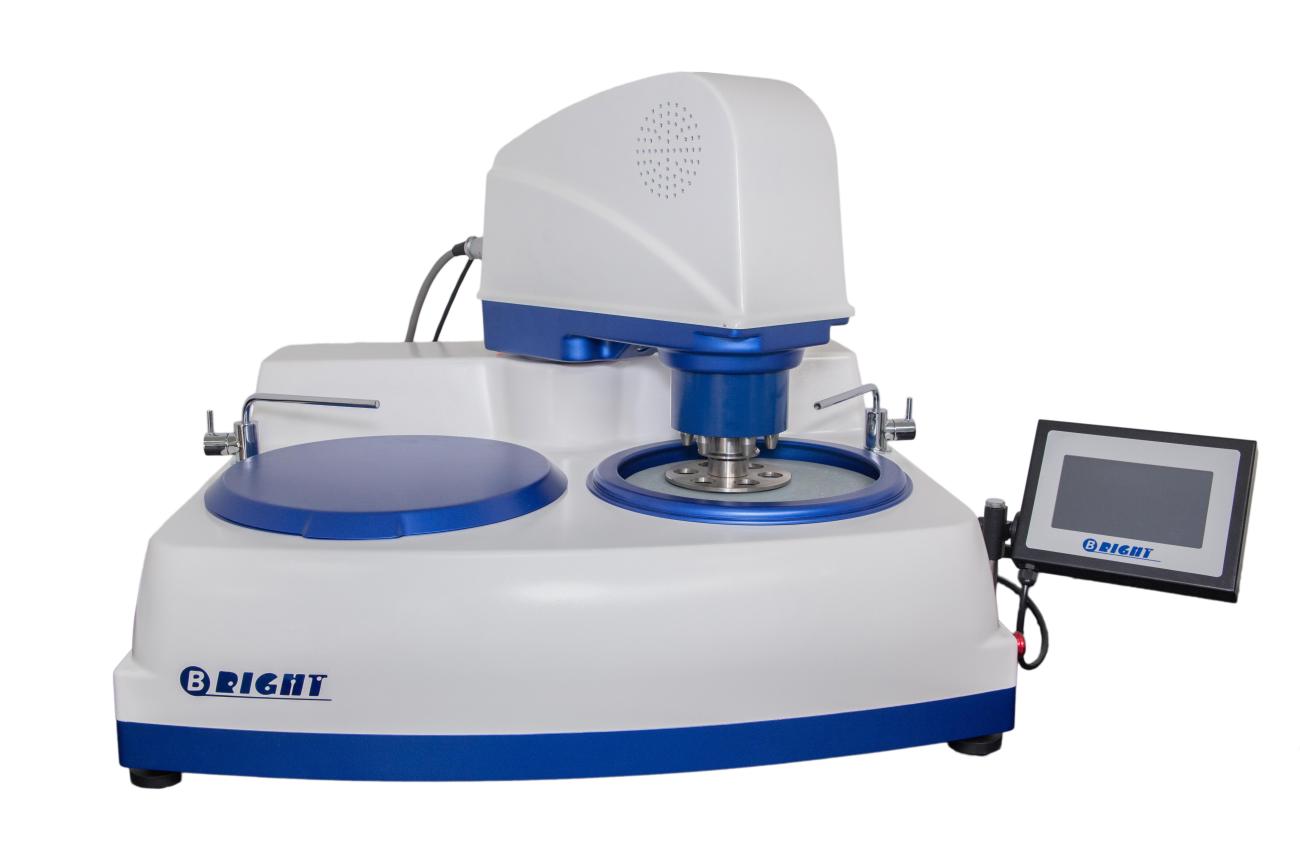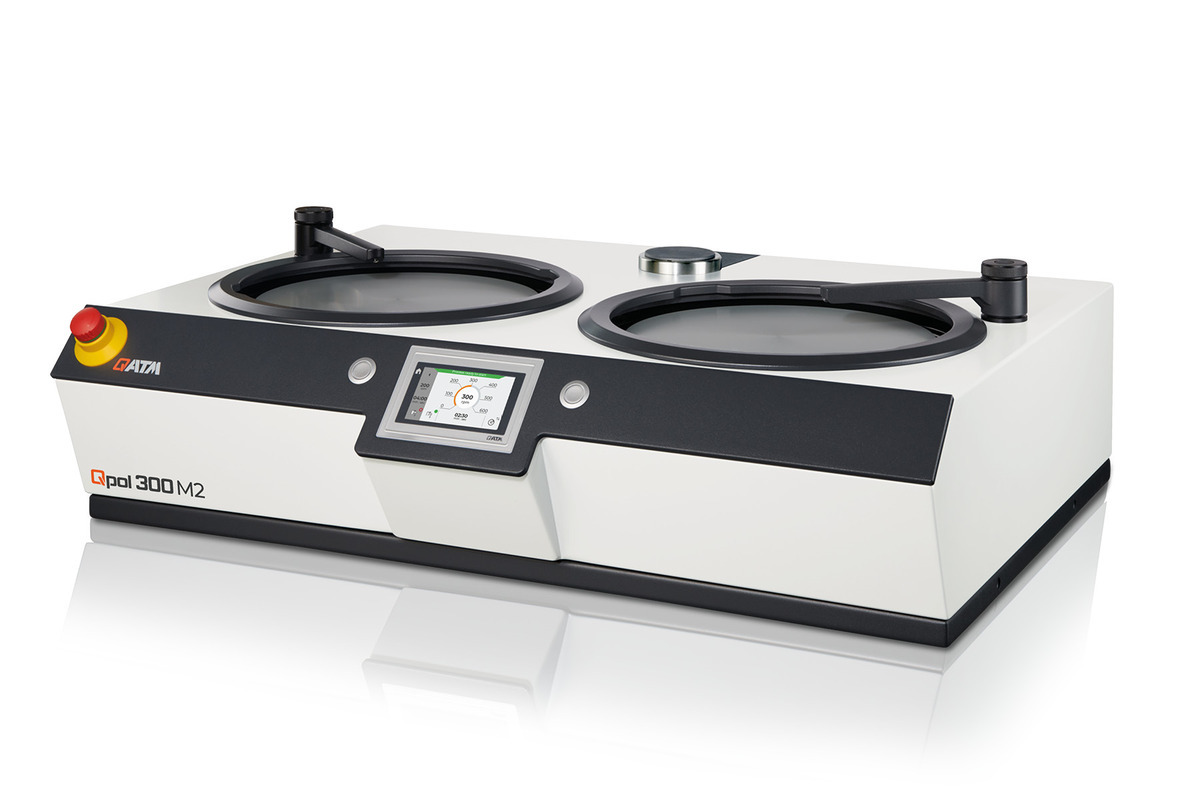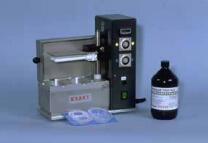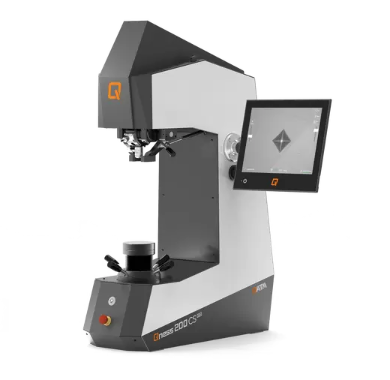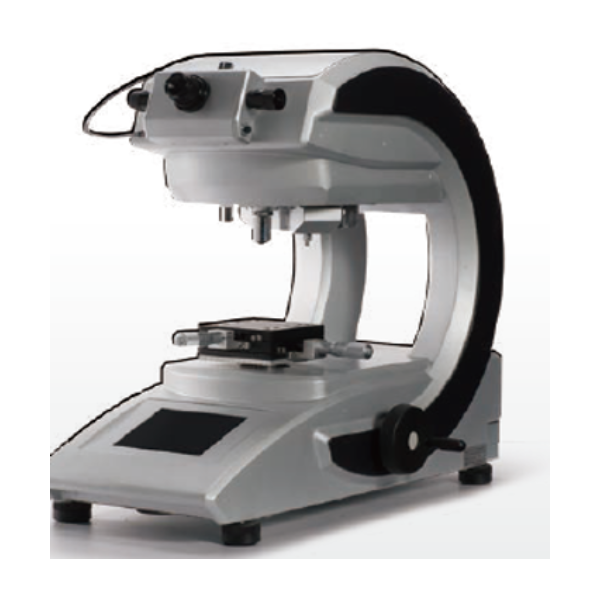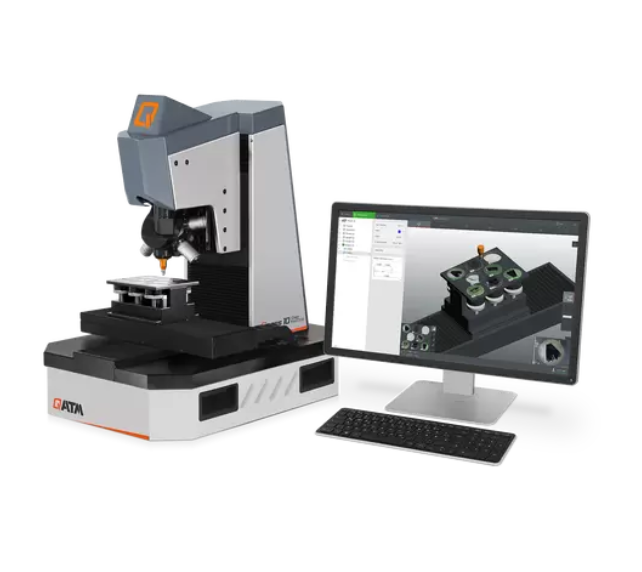Microsectioning has become a standard requirement of printed wiring board (PWB) quality assurance due to the potential for hidden, subsurface defects, and for process control. In recent years, increasing numbers of PWB customers have begun to require certified vendors to perform statistical sampling of their product. Cost reduction initiatives are the driving forces which have shifted this responsibility to the vendor. Many wiring board manufacturers, however, are unprepared for this shift. Their microsectioning capabilities remain manual in nature, and they are poorly equipped to handle the volume of coupon cross-sectioning necessary to meet their customer’s requirements. Often, all that is needed is a small investment in microsectioning automation, but the perceived costs keep many PWB production houses from taking this critical step. In addition, many are fearful that automation will result in loss of jobs. While it is true that automation will free significant amounts of time for workers to focus on other efforts, it does not eliminate the need for operators altogether. This paper offers a look at manual and automated microsectioning of PWB’s, with the purpose of illustrating the time and cost benefits of automation.
方案详情

Written By: Scott Holt, Applications EngineerC2000 BUEHLER LTD.Printed in U.S.A. 5M0300 FN01150An ITW Company Automated Microsectioning: An Economic Justification Introduction Microsectioning has become a standard requirementof printed wiring board (PWB) quality assurance dueto the potential for hidden, subsurface defects, andfor process control. In recent years, increasing numbersof PWB customers have begun to require certifiedvendors to perform statisticalil sampling of theirproduct. Cost reduction initiatives are the drivingforces which have shifted this responsibility to thevendor. Many wiring board manufacturers, however,are unprepared for this shift. Their microsectioningcapabilities remain manual in nature, and they arepoorly equipped to handle the volume of couponcross-sectioning necessary to meet their customer'srequirements. Often, all that is needed is a smallinvestment in microsectioning automation, but theperceived costs keep many PWB production housesfrom taking this critical step. In addition, many arefearful that automation will result in loss of jobs.While it is true that automation will free significantamounts of time for workers to focus on other efforts,it does not eliminate the need for operators altogether.This paper offers a look at manual and automatedmicrosectioning of PWB’s, with the purpose of illustratingthe time and cost benefits of automation. Figure 1. A cross-sectional view of a printed wiring board at thecenterline of a plated through-hole. What is Microsectioning? Microsectioning is a destructive technique used toevaluate PWB quality by exposing a cross-sectionalview of the microstructure at a selected plane. Thisplane is usually located at the center of a plated through-hole, or via. (Figure 1). Due to the destructive nature ofmicrosectioning, test coupons are generally used. Thesestandardized coupons are typically taken from otherwiseunused areas of production panels. As a result, theyundergo the same processing steps as the boards, and theyare, therefore, statistically representative of the overall panel. Removal of coupons from the production panel can beaccomplished in a number of ways. One of the morecommon means of extraction is the punch and diemethod. This method utilizes a shearing force to punchthe coupon from the surrounding material. For relativelythin boards, this method provides a fast means of couponremoval with minimal disruption to the integrity of thecoupon. For thicker boards, a diamond saw such as theISOMET 1000, with Table Saw accessory, is a fast, lowdeformation means of coupon removal. See Figure 2. Figure 2. ISOMET 1000 Precision Sectioning Saw with TableSaw accessory effectively sections or trims printed circuitboards The first step in microsectioning is to encapsulate thecoupons in a protective resin. This resin material is criticalsince itsupportsthe plated and solder-coatedstructures during the cross-sectional preparationprocess. For medium to high volume coupon preparation, acrylic mounting compoundsSaretypically usedfor their fast curing capabilities. Once mounted, thecoupon is ground and polished to the centerline of thethrough-hole. Cross-sectioning in the close vicinity ofthe through-hole centerline is critical, as it allowsstatistically accurate plating thickness measurementsto be taken. Microsectioning Requirements Microsectioning of a test coupon usually has tworequirements:(1) The first is that the finished cross-section must be representative of the true structure. Thismeans that proper grinding and polishing proceduresmust be followed so that deformation produced during eachstep in the process is reduced by subsequent steps, untilvirtually no deformation remains; (2) The secondrequirement is that there must be minimal sampleorientationerror. Sample orientation error occurs in two forms:Tilt Error and Planar Error. Figure 3. Illustration A shows the results of tilt error. Platingthickness appears to vary. Illustration B shows the results ofplanar error. Plating thickness is exaggerated. Illustration Crepresents a properly perpared section. · Tilt error is the failure to produce a finished cross-sectionparallel to the centerline of the target through-hole or via.The result is a perceived variation in plating thickness fromone end of the through-hole to the other, where one mightnot exist. · Planar error is the failure to produce a finishedcross-section within ±10% of the hole diameter from thecenterline of the target through-hole or via. This causesa misrepresentation of the true plating thickness, as illus-trated in Figure 3. Plating thickness appearancebecomes exaggerated as the plane of sectioning movesfarther from the centerline of the hole. Let us now consider various options for producingmicrosections in quantity. Manual Microsectioning For laboratories that prepare fewer than 10-20 coupons perday, manual microsectioning may be appropriate. It mayalso be necessary when through-hole diameters areextremely small (0.008"/200um or smaller). When preparing a microsection, there is a significant timeand cost advantage to preparing more than one coupon per mount. With manual microsectioning, however, theproblem is the inability to precisely align targetthrough-holes in more than one coupon at a time. Thesethrough-holes must be aligned exactly so that thepreparation process results in a section near the centerlineof the target through-holes in every coupon. Once aligned,resin must be cast around the coupons withoutcausing misalignment. Because this is such a difficult task, most laboratories, whichproduce microsections manually, generally produce onecoupon per mount to avoid potential problems. Thisresults in loss of throughput, and high consumables cost. In addition, manual preparation assumes that whom-ever produces the sections will hand grind themaccurately and consistently, with no alignment error. Thisis a big assumption since manual sectioning requiresregular inspection during the preparation process, andan experienced eyeis needed to detect tilt andplanar errors evenwhen appropriate microscopictechniques are used. This regular need for inspectionresults in long preparation times for manual methods. Medium Volume Manual Microsectioning An alternative to standard manual micro-sectioning isavailable in the form of the PC-MET JR. (Figure 4). Thissystem incorporates a pinning process to align as many assix coupons together. (Figure 5). Figure 4. a) Coupons being encapsulated in Acrylic resin, andreferenced to the body of the PC-MET° JR. b) PC-MET°JR.accessory with cast coupons in place ready for grinding andpolishing Figure 5. a) A typical coupon design for high volume specimenpreparation, b) The pinned coupon concept By pinning the standardized coupons together, it ispossible to align the target through-holes of each couponto one plane. These prealigned coupons are thenencapsulated in protective resin, directly within the body ofthe PC-MET JR. By this method, the coupons and thecenterline of their through-holes are referenced to thefixture for the remainder of the preparation process.‘Quick Adjust’ Diamond down-stops then allow theoperator to manually grind all of the coupons to the sameplane without the need to continually check them. Theadvantages? Up to six coupons can be prepared together,reducing preparation time. In addition, consumables usageis reduced by a factor of six, and the pinning system anddiamond down-stops eliminate sample orientation error,resulting in consistent microsectioning accuracy. Automated Microsectioning While the PC-MET JR. improves accuracy and throughput,there are still those whose sample volume requiresmore automation. In addition, whether performed onecoupon at a time, or with a fixture that supports thepreparation of multiple coupons, manual preparation yieldsthe potential for repetitive motion injury, and thus,laboratory downtime. By automating the cross-sectioningprocess, these concerns are eliminated, and throughput isdramatically improved over manual preparation. TheNELSON-ZIMMER 2000 System (Figure 6), which iscapable of preparing as many as 36 coupons at one time,reduces operator involvement in the preparation process Figure 6. NELSON-ZIMMER2000 System by passing the strenuous grinding and polishing tasks toa mechanized system. As with the PC-MET JR., theNELSON-ZIMMER 2000 System utilizes the pinningmethod to prealign as many as six coupons at one time.Six of these prealigned groups are then referenced to thebottom surface of the grinding fixture for a total of 36coupons. Once the groups are referenced so that the through-holes in each coupon are aligned to the same plane, pro-tective resin is used to encapsulate the coupons and lockthem in place for the remainder of the preparation process'Quick Adjust' diamond and tungsten carbide down-stops are used to control grinding depth so that allof the coupons are ground and polished to the centerlineof their respective target holes. Minimal operator involve-ment includes charging abrasives, adjusting the ‘QuickAdjust' down-stops, and starting the system for each step..By automating the grinding and polishing tasks with theNELSON-ZIMMER 2000 System, it becomes possible toaccurately prepare hundreds of coupons per day with nosample orientation error, and no possibility of repetitivemotion injury. The resulting cost and time savings of anautomated system are dramatic as well... Cost and Time Savings! As a basis for analysis, let us consider a microsectioninglaboratory producing 10,000 coupons per year. Such alaboratory, preparing microsections by inefficient manualmeans, would spend approximately $12.78 per couponon consumable supplies alone (All analyses are basedon 1999 US$ prices. 1 use per abrasive paper and 5 usesper polishing cloth are assumed). If this laboratorywere to automate the process using the BUEHLERNELSON-ZIMMER@ 2000 System, which can produce 36coupons at a time, their consumable costs would decreaseto $0.63 per coupon, for savings of $12.15 per coupon!See Table 1. Consumablecosts, however, are not the onlysavings that automation brings. Table 1. Consumables Costs NELSON Manual PC-MET Jr. ZIMMER 2000 8”consumables 8” consumables 12”consumables 1 coupon 6 coupons 36 coupons Total Cost ($US) per cycle per cycle per cycle per mount $12.78 $12.96 $22.73 per coupon $12.78 $2.16 $0.63 Consider the time for a laboratory technician to prepareone coupon per mount. Table 2 illustrates the typical time forpreparation of coupons produced manually versusautomatically. While the time savings, due to automation,are dramatic, one must also consider the additional timesavings created by the elimination of the need to inspect forsample orientation errors. Table 2. Preparation Time (min:sec) NELSON- Manual PC-MET° Jr. ZIMMER2000 8"consumables 8"consumables 12"consumables 1 coupon 6 coupons 36 coupons Preparation Step per cycle per cycle per cycle Alignment Pin Placement 0:00* 1:00 6:00 Encapsulation 1:00 10:00 10:00 Initial Grinding Step 1:00 2:00 2:00 Second Grinding Step 3:00 0:30 0:30 Third Grinding Step 3:00 2:00 2:00 Course Polishing Step 1:30 1:30 1:30 Final Polishing Step 1:10 1:10 1:10 Prep Time Per Cycle 10:40 18:10 23:10 Prep Time Per Coupon 10:40 3:02 0:39 *10 mounts created at one time (10:00 min) Time per mount (1 coupon) is 1:00 min In order to convert this time savings to a monetary value, letus assume that our laboratory technician, in this example,earns $10.00 per hour. When we use this hourly wageto calculate Total Yearly Costs (See Table 3), we find thatManual preparation costs $145,578 per year, whereasautomatic preparation costs only $7,383 per year, for adifference of $138,195. This amounts to an overall saving of1972% when the NELSON-ZIMMER@ 2000 System isemployed, as compared to manual preparation. Conclusions While an argument can be made that manual or automaticpreparation might take slightly more or less time than Table 3. Total Cost Savings NELSON- Manual PC-MET°Jr. ZIMMER°2000 8”consumables 8"consumables 12"consumables 1 coupon 6 coupons 36 coupons Costs per cycle per cycle per cycle Consumable Costs (Cost per coupon x10,000 Coupons) $127,800 $21,600 $6,300 Technician Costs (Time/coupon x $10.00x 10,000 Coupons) $17,778 $5,056 $1,083 Total Yearly Costs $145,578 $26,656 $7,383 described here, such an argument would not negate thefact that automation dramatically reduces the yearlycosts of volume microsectioning. Based on the aboveanalysis, and on current US pricing, the NELSON-ZIMMER2000 System has an initial payback period of less thantwo months. Consumable costs and time savings are important, butautomation offers much more than this. Automation alsobrings quality and consistency to the microsectioningprocess. By providing a means of preparing numerousmicrosections simultaneously, and with the assurancethat each automatically prepared coupon will yield a moreaccurate analysis, the NELSON-ZIMMER2000 Systemhas proven itself to be a necessary part of the modernPWB microsectioning laboratory. If you have a question that you’d like to see answered, or a tipthat you feel would benefit our readers, please write, call orfax to: BUEHLER 41 Waukegan Road, Lake Bluff, Illinois 60044P: +1 847 295 6500800 BUEHLER (800 283 4537) W: www.buehler.comE: info@buehler.com 亚洲总部 BUEHLER 标乐中国-上海 依工测试测量仪器(上海)有限公司 P: (86) 400 1118683F: (86)21 6410 6671 W:www.buehler.com.cn|E: info.cn@buehler.com BUEHLER Automated Microsectioning: An Economic JustificationIntroductionMicrosectioning has become a standard requirement of printed wiring board (PWB) quality assurance due to the potential for hidden, subsurface defects, and for process control. In recent years, increasing numbers of PWB customers have begun to require certified vendors to perform statistical sampling of their product. Cost reduction initiatives are the driving forces which have shifted this responsibility to the vendor. Many wiring board manufacturers, however, are unprepared for this shift. Their microsectioning capabilities remain manual in nature, and they are poorly equipped to handle the volume of coupon cross-sectioning necessary to meet their customer’s requirements. Often, all that is needed is a small investment in microsectioning automation, but the perceived costs keep many PWB production houses from taking this critical step. In addition, many are fearful that automation will result in loss of jobs. While it is true that automation will free significant amounts of time for workers to focus on other efforts, it does not eliminate the need for operators altogether. This paper offers a look at manual and automated microsectioning of PWB’s, with the purpose of illustrating the time and cost benefits of automation.
确定
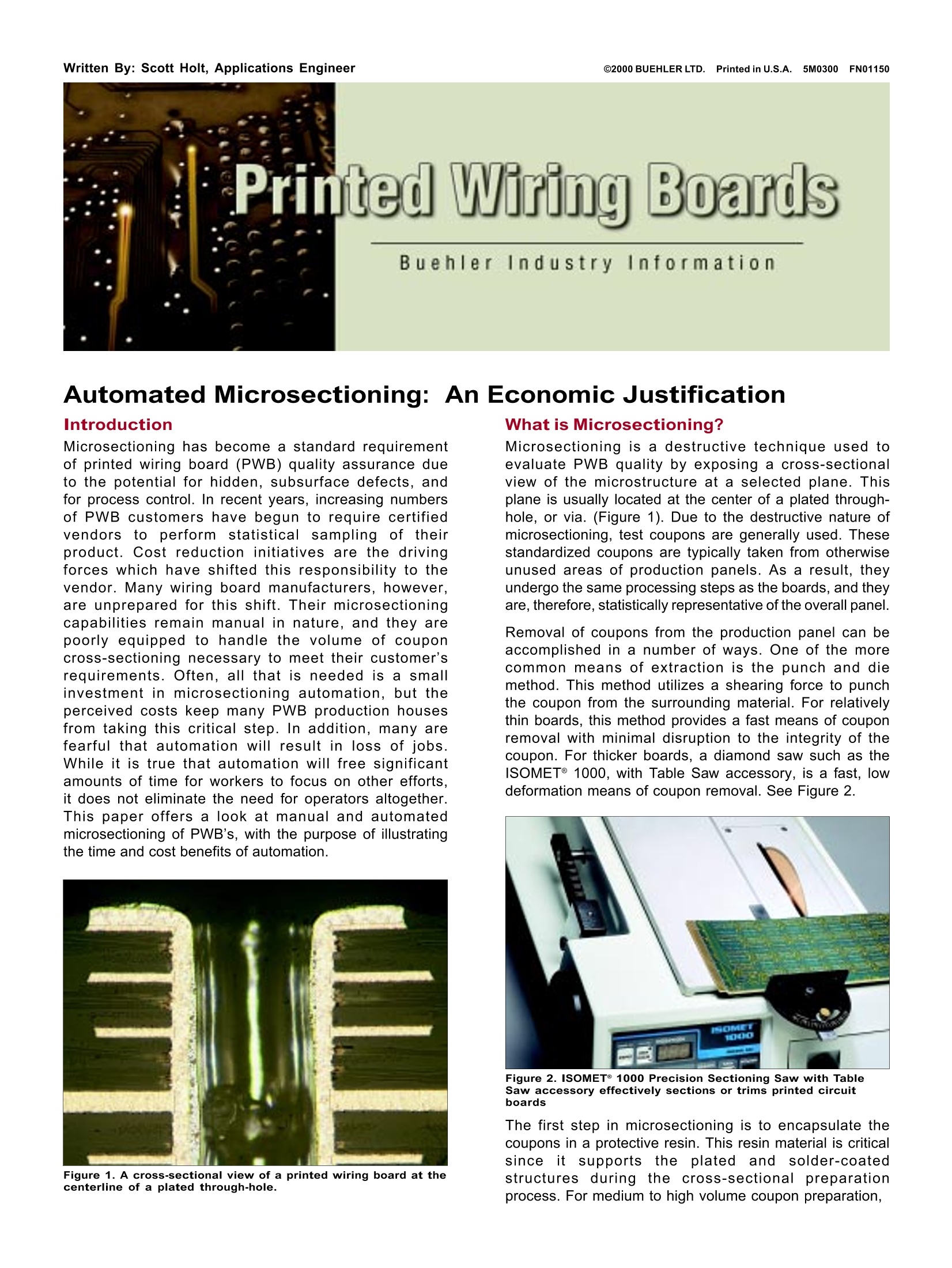
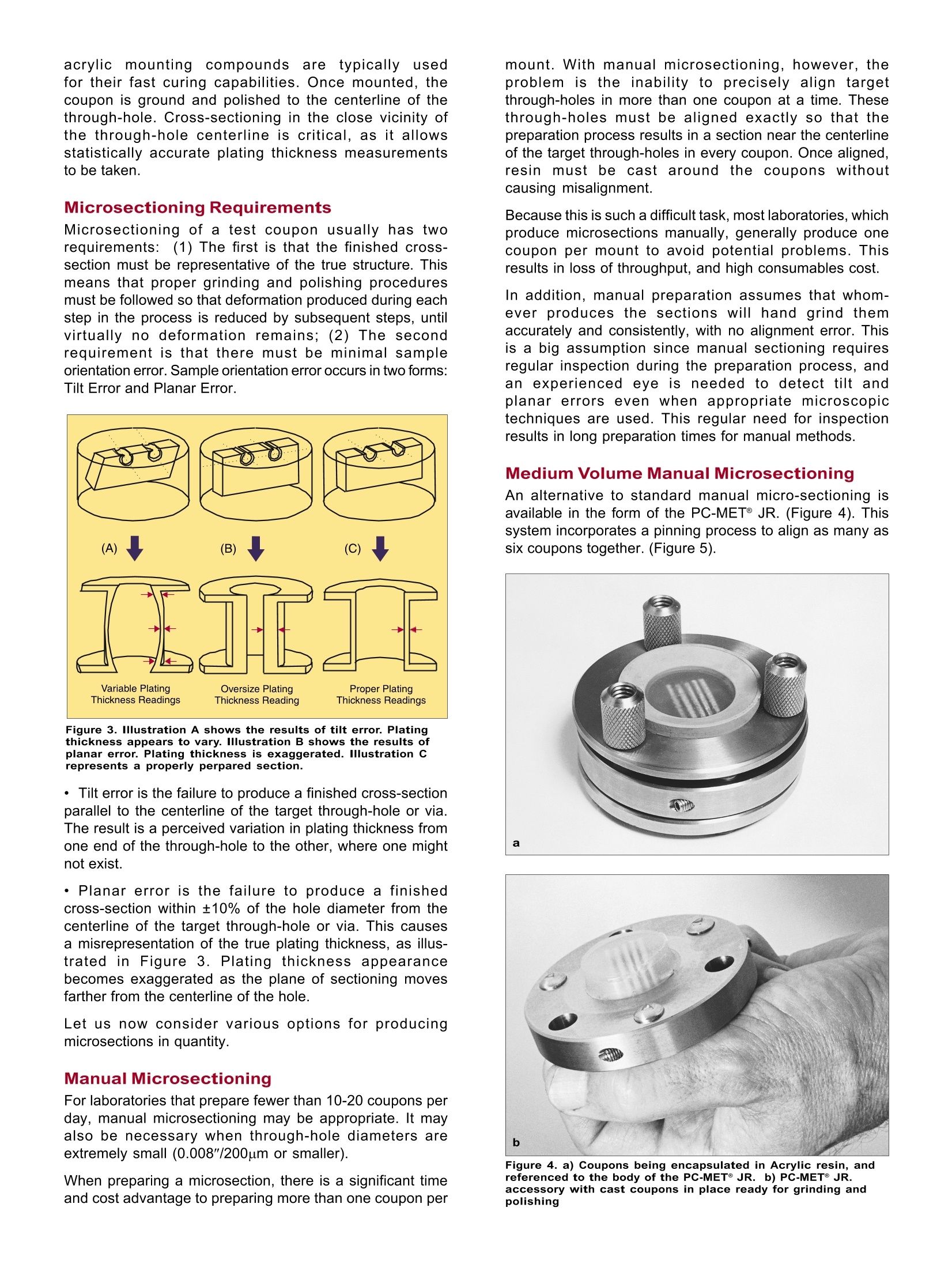
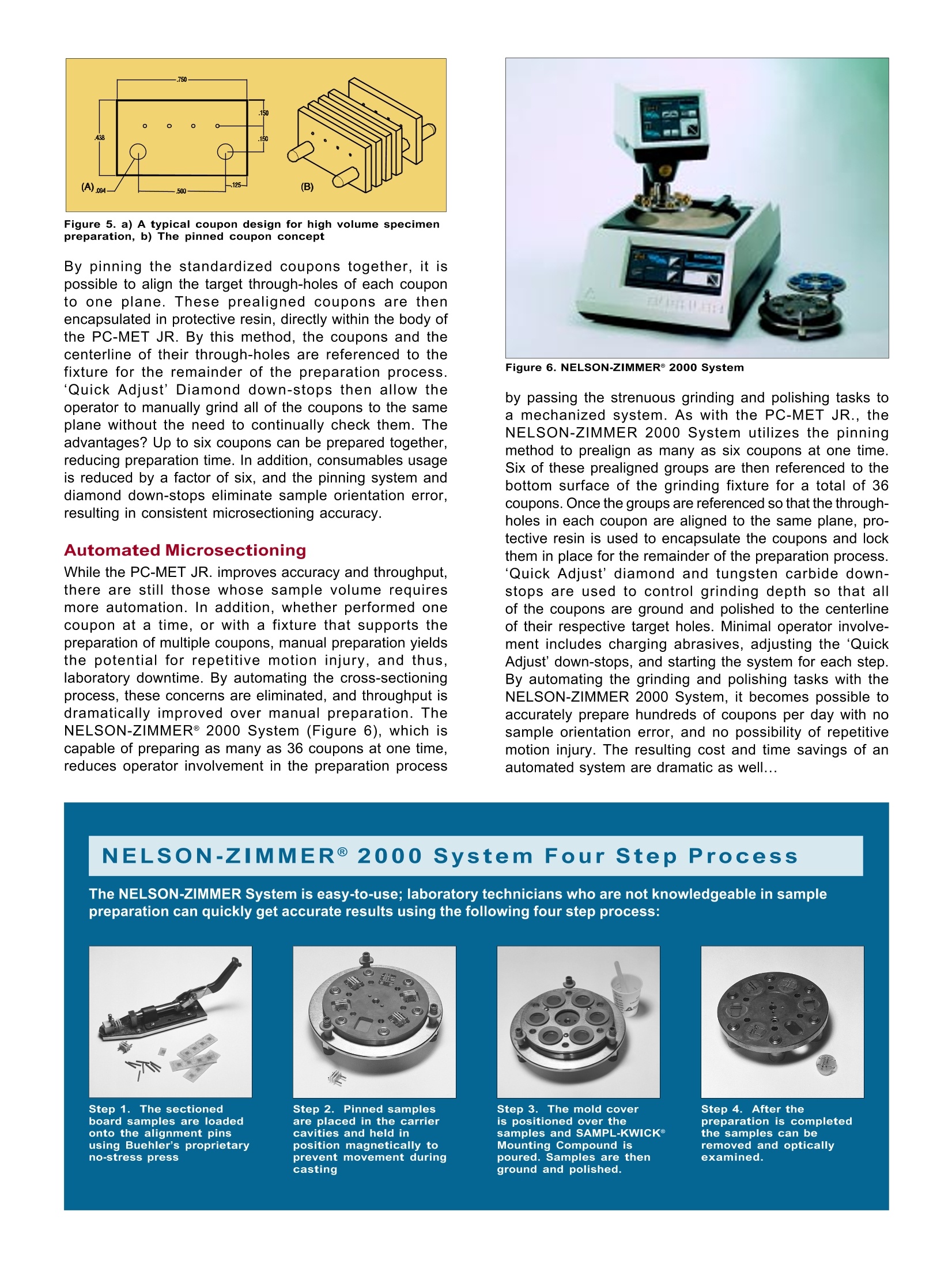
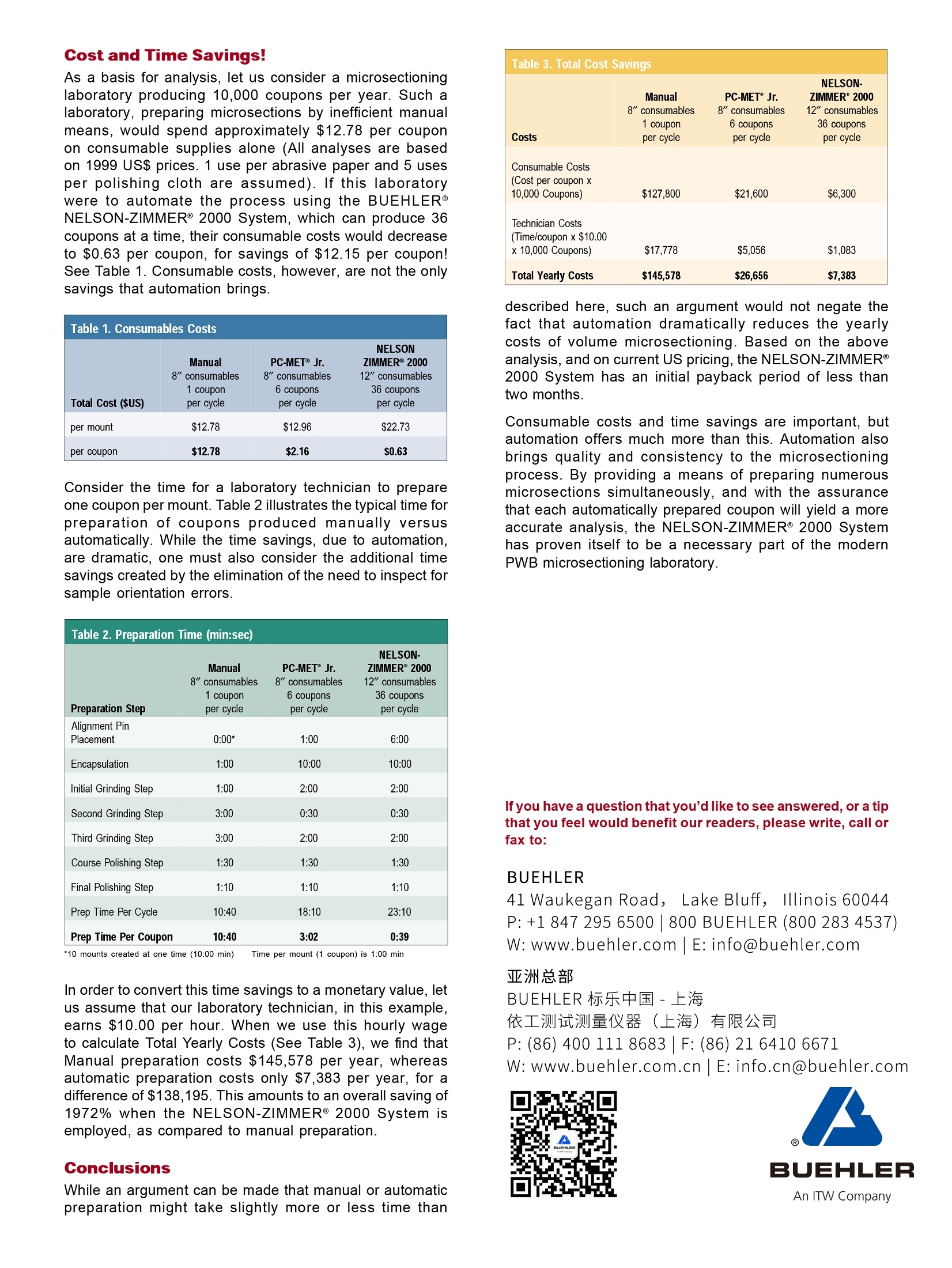
还剩2页未读,是否继续阅读?
美国标乐为您提供《PCB中金相制备检测方案(切割机)》,该方案主要用于电子元器件产品中金相制备检测,参考标准--,《PCB中金相制备检测方案(切割机)》用到的仪器有IsoMet 1000精密切割机、VibroMet™ 2 振动抛光机、Cast N' Vac 1000 真空镶嵌机、全自动维氏/努氏硬度计 VH3300 | 美国威尔逊硬度计
推荐专场
相关方案
更多
该厂商其他方案
更多

